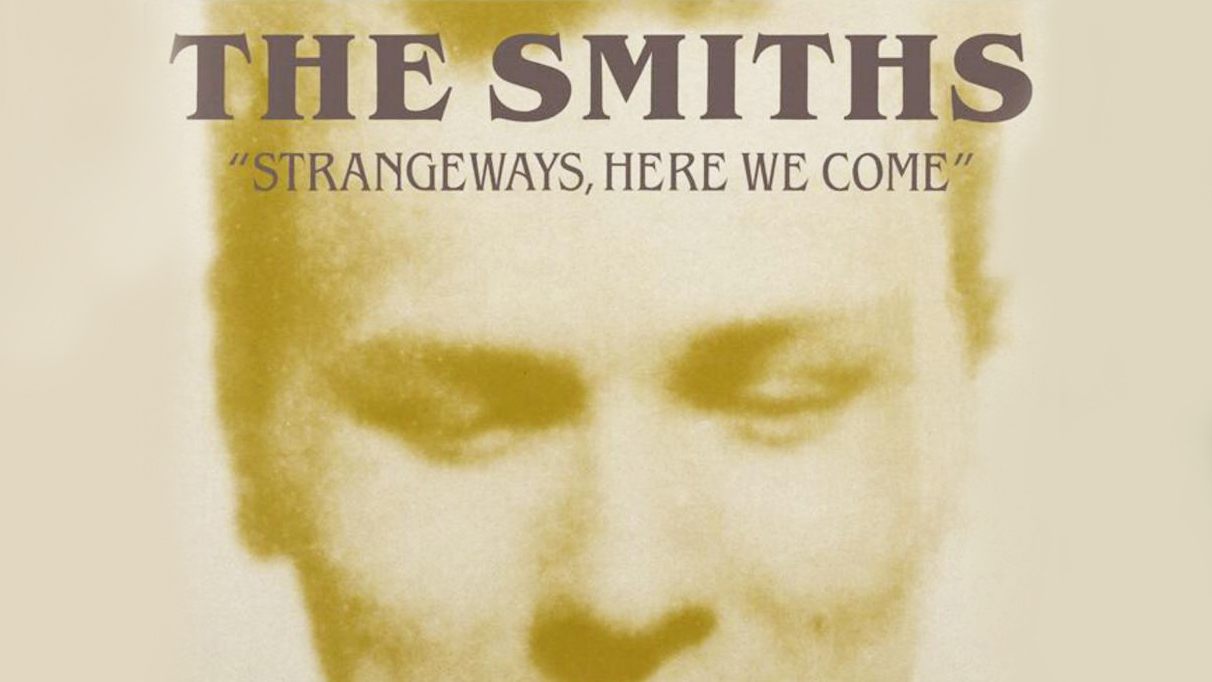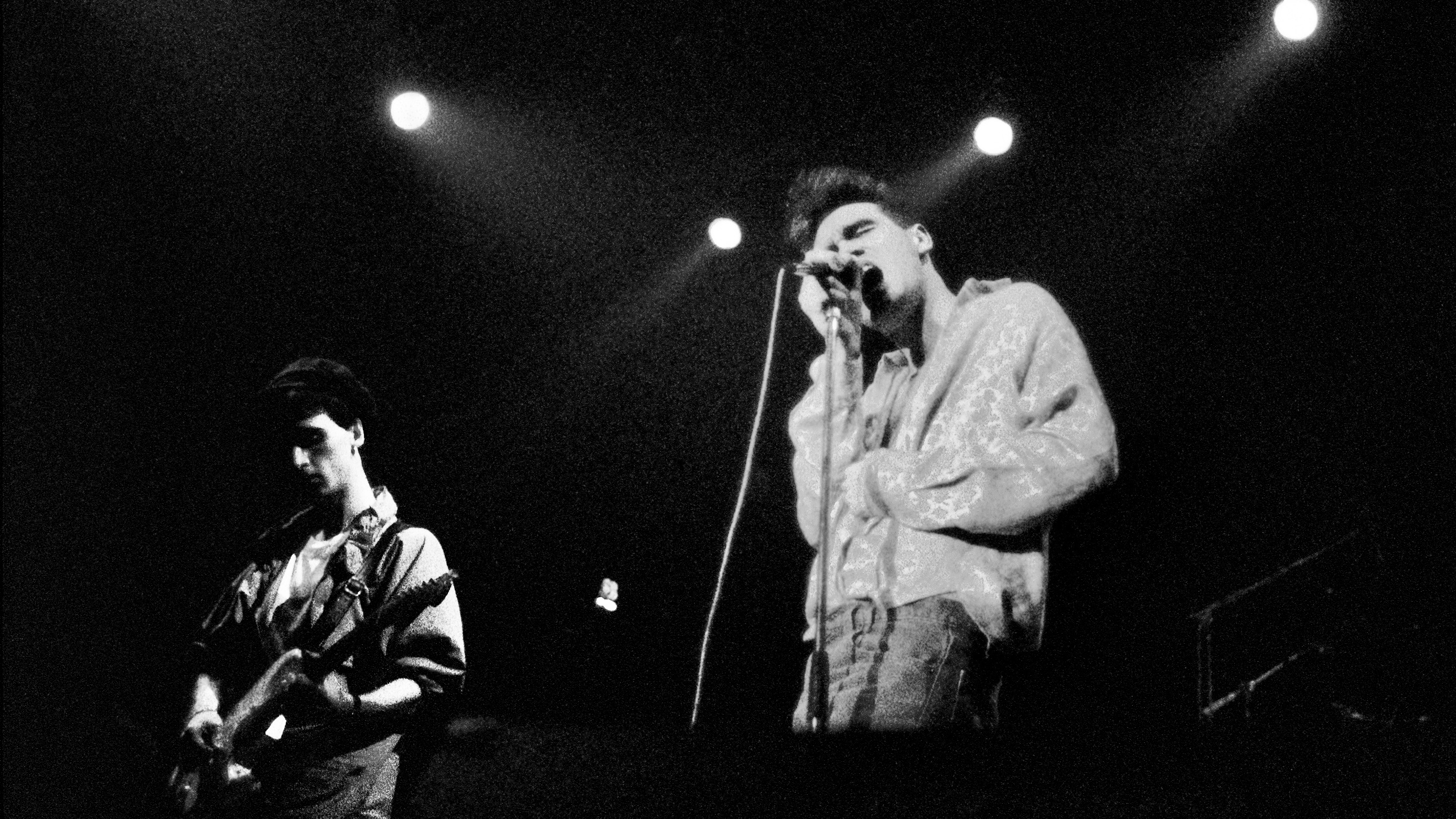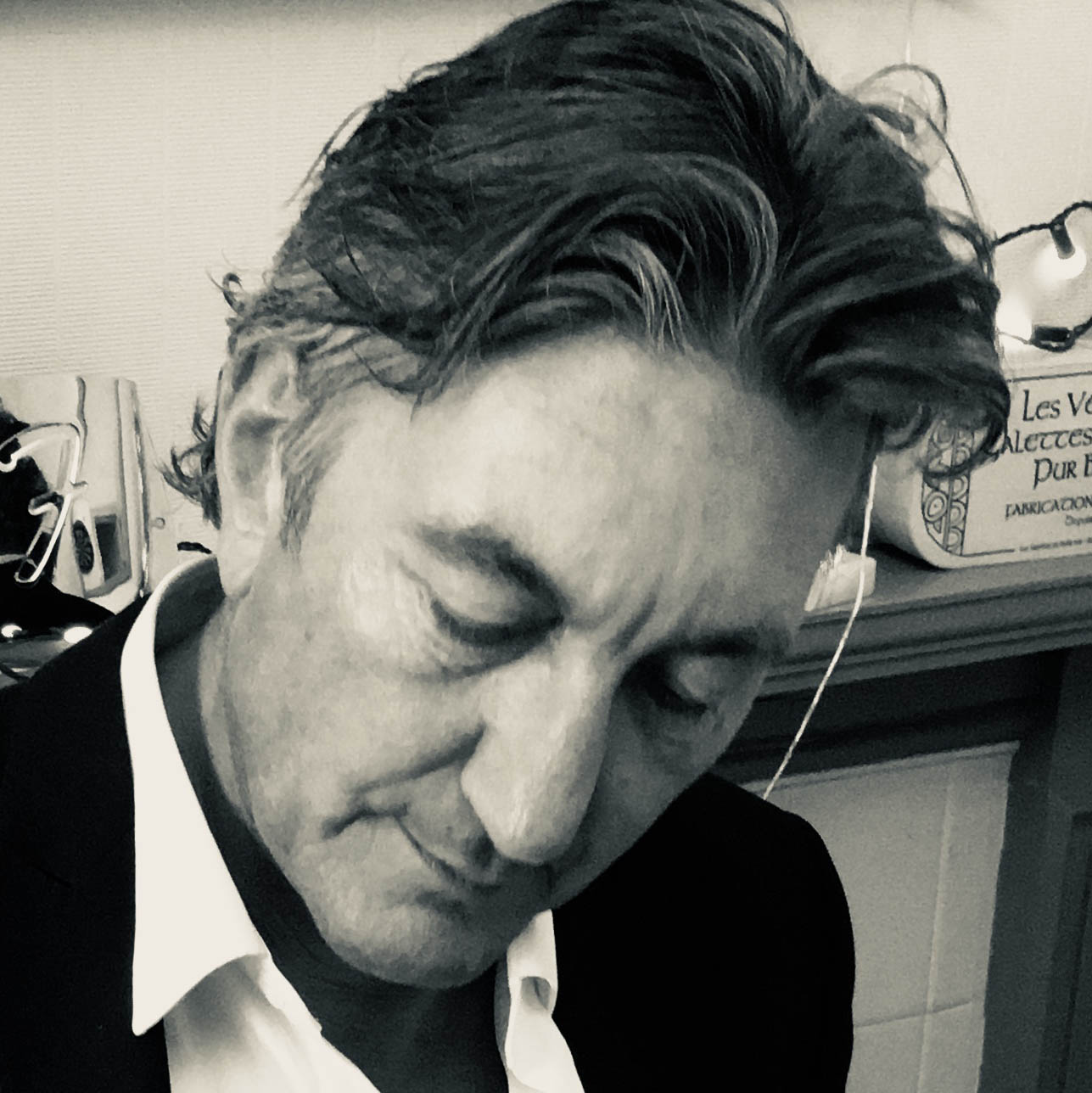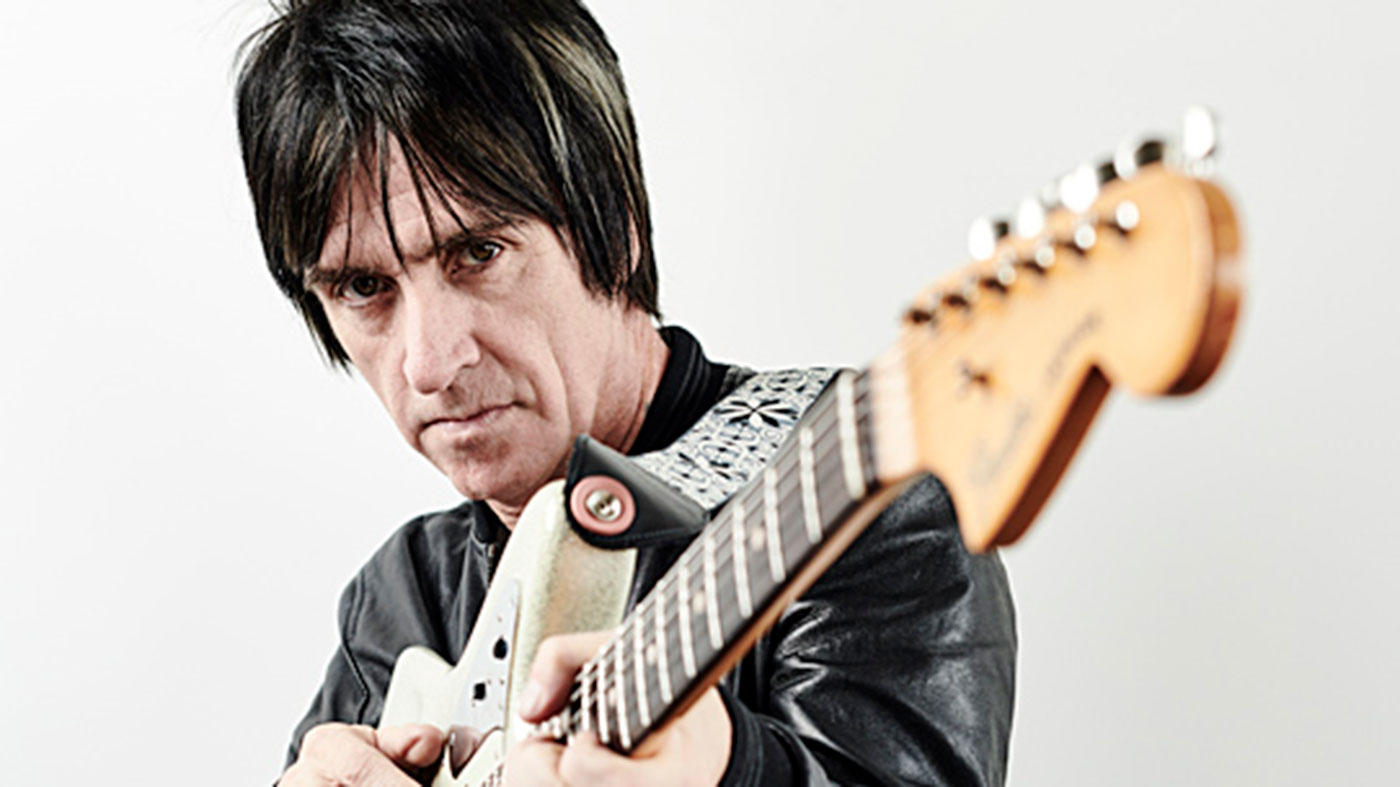“Every time I opened a music paper it said, ‘Johnny Marr – jingle jangle’. I'd just had enough”: How The Smiths defied expectations on their final album, Strangeways, Here We Come
Johnny Marr and Morrissey’s relationship may have crumbled during its creation, but The Smiths’ final album is regarded by many as their best

Delve back through rock and pop history and it’s often the most unlikely unions that create the most innovative and exhilarating music. Such was the case with Steven Patrick Morrissey and John Martin Maher, the former a writer, vocalist and visionary, who turned Mancunian mundanity into exquisite paeans of desire and disaffection; and the latter, a streetwise guitarist whose dazzling style and technique were matched by melodic prowess.
What they both shared, when they first met in May 1982, was a love of the New York Dolls, Patti Smith and '60s girl groups. They also both had boundless levels of drive, conviction and self-belief.
“It was pretty phenomenal that we were so in sync because the influences that we had individually were so obscure,” said Maher to Sean O’Hagan of the Observer in 2007, years after he had changed his surname to Marr. “It was like lightning fucking bolts to the two of us. This wasn't stuff we liked, this was stuff we lived for really.”
As The Smiths, along with bassist Andy Rourke and drummer Mike Joyce, they went on to release four studio albums that were unlike anything else around.
Their final album Strangeways, Here We Come, was recorded amid sessions that were reportedly fractious and by the time it was released in September 1987, the band had split. Despite tough competition within the catalogue, many – including Marr and Morrissey – now view Strangeways as the greatest album The Smiths ever made.
It was March 1987 when the four members of the band convened to start recording at The Wool Hall in Beckington, Somerset, a residential studio in a 16th-century property nestling in an idyllic setting. While they didn’t know it at the time, The Smiths had already played their last show together, at Brixton Academy, on 12 December, 1986.
One of the main things that was frustrating me about The Smiths was the way I was getting boxed
Johnny Marr
On this album, Morrissey and Johnny Marr co-produced with Stephen Street, who had engineered some of the band’s most iconic songs and went on to work with Morrissey in his solo career. From the outset, Marr was determined that they move in a new musical direction.
Want all the hottest music and gear news, reviews, deals, features and more, direct to your inbox? Sign up here.
“One of the main things that was frustrating me about The Smiths was the way I was getting boxed,” he told The Guitar Magazine in 1997. "Anyone with half an ear could listen to The Smiths records and hear hard guitars, distorted guitars, backwards guitars, slide guitars, acoustics, Nashville tunings, open tunings... yet every time I opened a music paper it said, ‘Johnny Marr - jingle jangle’. I'd just had enough...”
For inspiration, Marr looked to The Beatles’ ‘White Album’ and early records by the Walker Brothers. Instrumentally beyond the guitar, Strangeways marked a significant shift, encompassing synth strings and digital drum elements.
On the first night at The Wool Hall, as detailed in 2017 Simon Goddard’s 2017 book Mozipedia, and referenced in a piece by The Quietus, Johnny Marr got drunk, sat down at the keyboard, turned to Stephen Street and said: “You don’t like it when we do this,” as he proceeded to play the other-worldly motif from A Rush And A Push And The Land Is Ours. “You like us to be all jingly-jangly, don’t you?”
So began the creation of the opening song on the album, which has no guitar on it at all. “I really wanted to open the album, however I was going to do it, with a song with no guitar parts on it,” Marr told a fan in a 2020 Instagram Q&A. “I thought I'd try and sneak on the first track onto the album and see if anyone noticed. And nobody noticed until I told everybody.”
Glam rock influences pervade the album elsewhere, as on the storming I Started Something I Couldn’t Finish, which features a thick, crunching Les Paul riff. Marr said the song was inspired by David Bowie’s Jean Genie and Sparks’ Amateur Hour.
"It was just a weird chord change that I had in my pocket for a while,” he told Simon Goddard in his 2013 book Songs That Saved Your Life. “And we needed a song so I pulled that out, just trying to get the key changes to work."
One of Marr’s main guitars was his ‘59 Les Paul, “Just as you'd expect,” he said in a quote that appeared on smithsonguitar.com, “an amazing guitar. I used that a lot on Strangeways”. However, Marr composed the song on his Gibson ES -335 12-string, which he told The Guitar Magazine gave it a really big sound. The track also features a saxophone melody played on an Emulator , while Street added an electronic snare to Mike Joyce’s drum part to give it more texture.
“In terms of the Emulator, and the way that Johnny was writing at the time, I can remember during Strangeways he was set up in the control room rather than the live room and he just started playing these incredible string and piano parts,” Joyce told music blog Say It With Garage Flowers. “I know he’d played those on tracks before, but I was taken aback – I thought, ‘Hold on a minute – where did he learn to do that?’”
The tranquil setting of The Wool Hall made for a relaxing environment and it also boasted a fully-stocked wine cellar. Street recalled that the sessions would always be followed by late night drinking.
“Everyone else was more than willing to join [Marr] in this new love affair,” wrote Ed Power in a piece in The Independent in March 2020. “Parties at The Wool Hall became a nightly event. With Morrissey tucked up in bed with his favourite Sylvia Plath anthology, the musicians would cover their favourite Spinal Tap songs into the wee hours".
For Marr, it was an inspirational setting. “I was in my element,” he wrote in his 2016 autobiography, Set The Boy Free. “I didn’t need to know what was going on in the outside world or see anyone other than the band and [my girlfriend] Angie… and I loved the new songs.”
As always, Marr’s musical structures would be given to Morrissey to create the vocal melodies and lyrics. His lyrical themes encompassed death and unrequited love. “Oh, don’t mention love / I’d hate the strain of the pain again,” he sings on A Rush And A Push And The Land Is Ours.
I wanted to make sure my main guitar parts really counted and stayed on the record
Despite the shift in sonic direction, the album still contains inspiring guitar moments. “I wanted the electric guitar parts a lot less layered and with a lot more weight,” Marr told The Guitar Magazine in January 1997, “The stuff that wasn't acoustic was mainly led by my 335 12-string. In fact, a lot of the songs – I Started Something..., Paint A Vulgar Picture and Stop Me If You Think You've Heard This One Before – were written on that guitar. I wanted to make sure my main guitar parts really counted and stayed on the record.”
On Paint A Vulgar Picture, Marr laid down his first full-on guitar solo. “Yeah, it was a big deal!' he recalled with a grin. “I had to make everyone leave the studio, bring in a few candles... no, not really. The song just suited it.”
The track, with its plaintive chord structure, takes a direct swipe at record companies. “Re-issue! Re-package! Re-package! / Re-evaluate the songs / Double-pack with a photograph / Extra track (and a tacky badge).”
Marr’s experimentation included dropping a serrated metal-handled knife onto the strings of his dark-green sunburst Roger Giffin Telecaster, on the rousing Stop Me If You Think You’ve Heard This One Before.
Production-wise the sound is fuller and more dynamic than on previous albums. On Stop Me… Marr’s shimmering high frequency acoustic is high up in the mix and Morrissey’s vocal sound is deep, reverb-soaked and rich. The distinct character of Andy Rourke’s bass really pushes through and Mike Joyce’s drums are wide and resonant.
Rourke and Joyce’s dexterity really shines on Death Of A Disco Dancer, which features nifty piano licks from Morrissey. Strangeways was the first album on which he played a musical instrument.
As ever, Morrissey’s lyrics were witty, exquisite and sometimes controversial. Girlfriend In A Coma drew its fair share of flak, which he addressed in a 1987 interview, which was published in the Bury New Road website in 2022.
“The word ‘coma’ is obviously underused and morbid,” he said. “It doesn’t frequent, for instance, the Top 40, so people think it’s a very touchy subject. But I don’t think it is, I think it’s a very jolly pop record really. I can hear it on the radio.”
He was right. Released as a single on 10 August 1987, the song reached No. 13 in the UK Singles Chart.

For all the creative high points and idyllic setting of The Wool Hall, tensions came to the fore during the recording of the album. As Richard Smith put it in The Guardian in 2007: “Strangeways is the sound of the sorry end of a truly great musical partnership and of a beautiful friendship crumbling away in front of the mixing desk.”
By the time the album was released on 28 September 1987, The Smiths had split up. The breakdown was largely attributed to Morrissey's alleged concerns over Marr working with other artists and Marr's alleged frustration with Morrissey's musical inflexibility.
The one positive is that Strangeways is arguably their finest album.
“Strangeways suffers because it was our last record, so people think there were arguments and horrors in making it, but there weren’t,” Marr told Stuart Maconie in an interview for Select magazine in December 1993.
“Morrissey and I think it’s possibly our best album… Last time I saw Morrissey he said [Last Night I Dreamt That Somebody Loved Me] was his favourite Smiths song. He might be right. Over the last few years I’ve heard Girlfriend In A Coma in shops and people’s cars and I’m always surprised how good it sounds.”
Morrissey too confirmed that he felt Strangeways was The Smiths’ best album. "Well, it is,” he stated in Len Brown’s 2009 book, Meetings With Morrissey. “We're in absolute accordance on that. We say it quite often. At the same time. In our sleep. But in different beds."
For fans and critics, the debate rolls on. The Queen Is Dead album has generally been viewed as The Smiths’ unassailable critical peak. But on Strangeways, which reached No. 2 in the UK Albums Chart, they achieved near perfection.
"Whether or not Strangeways, Here We Come ended the Smiths' brief career with their best album has been the subject of considerable debate for nearly a quarter century,” concluded Slant Magazine. “But it definitively stands as the band's most lush, richest work."

Neil Crossley is a freelance writer and editor whose work has appeared in publications such as The Guardian, The Times, The Independent and the FT. Neil is also a singer-songwriter, fronts the band Furlined and was a member of International Blue, a ‘pop croon collaboration’ produced by Tony Visconti.
